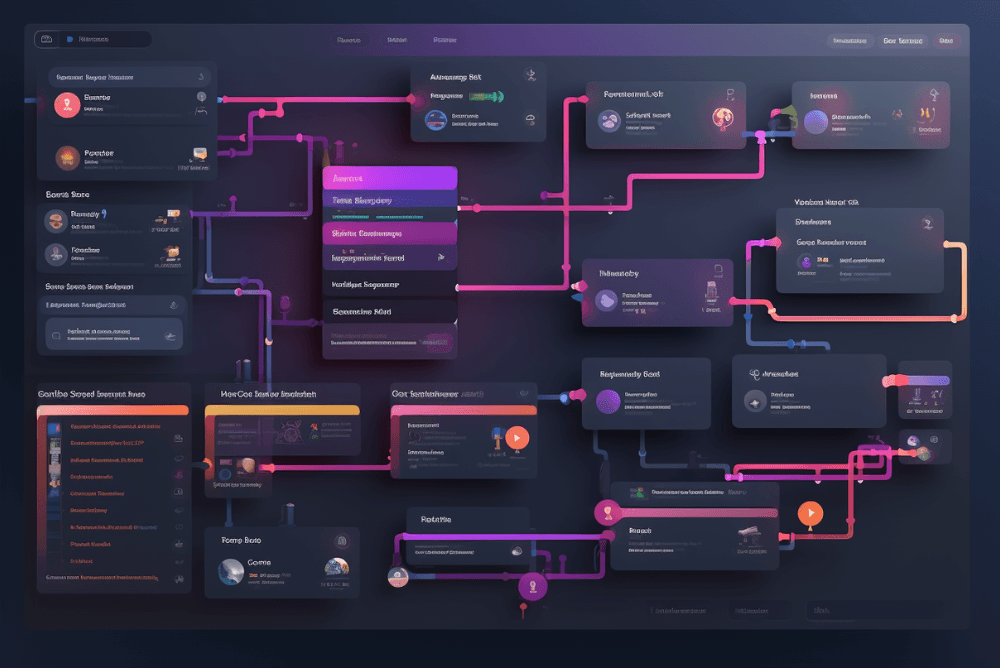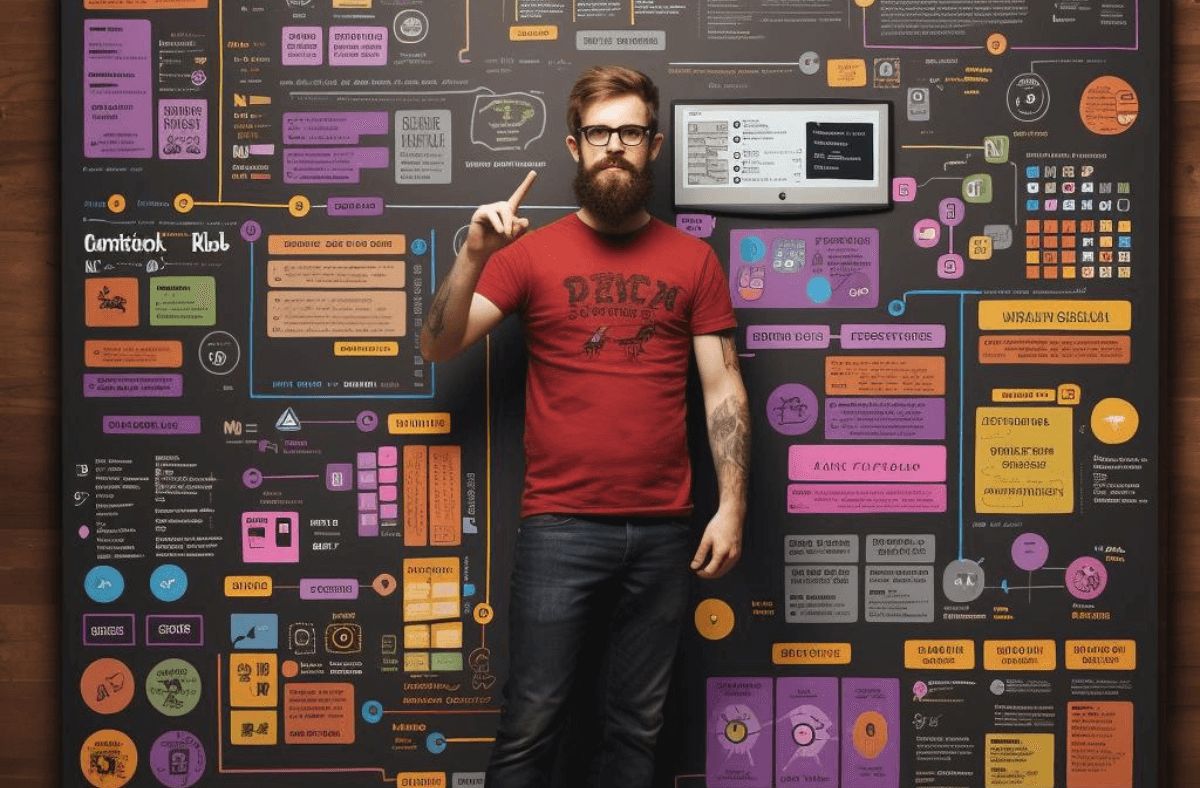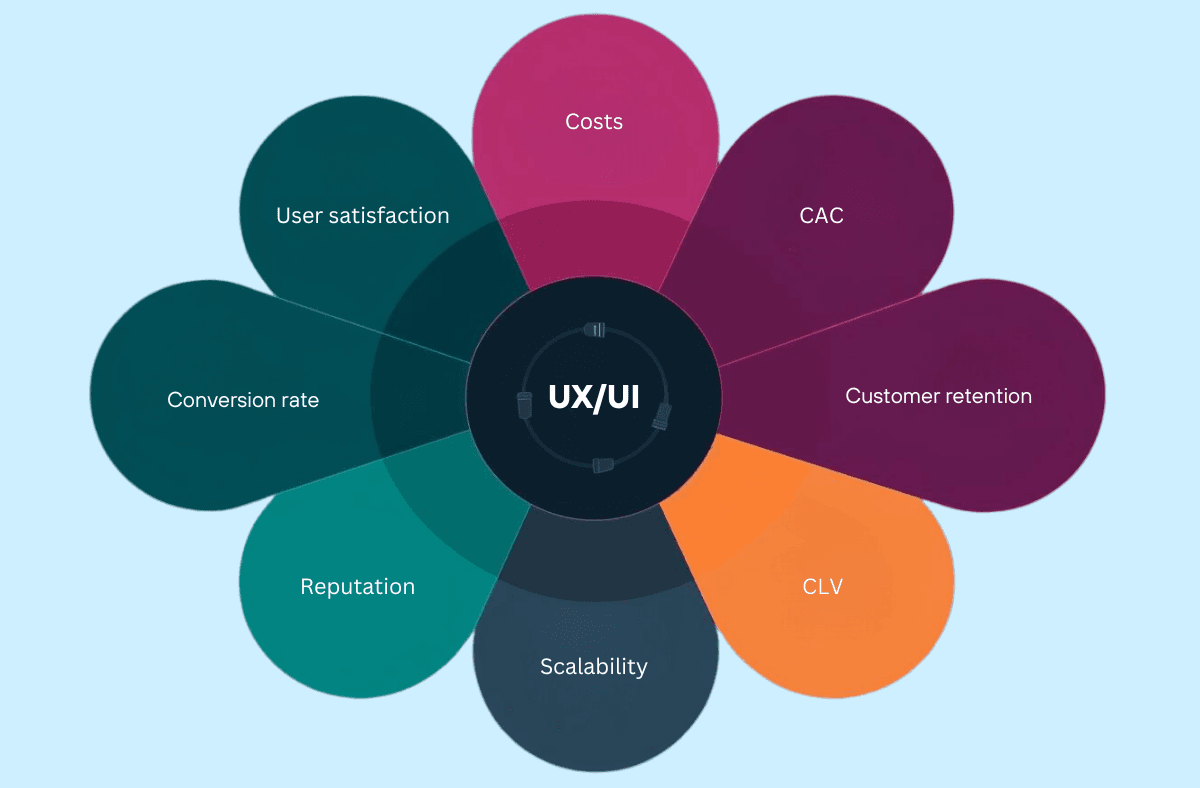In-house UX design teams vs. external consultancies – which approach to choose?
9 Feb 2024
You may wonder what’s more beneficial: bringing a UX/UI designer in-house or opting for an outside firm (image by Midjourney)
The design of your product can have a significant impact on your daily workflows and the efficiency of processes, as well as engaging users. If you're considering design improvements, you may wonder what’s more beneficial: bringing a UX/UI designer in-house or opting for an outside firm. Let us analyse the pros and cons of both options to help you make an informed decision.
We know it’s not always easy to determine what will pay off: hiring a full-time employee or bringing aboard a specialised UX/UI consultancy. Each approach has unique advantages, and the decision depends on various factors, including project complexity, scale, and the depth of expertise required (not to mention the budget).
Let’s review a few key reasons for hiring an external team to conduct your UX research and why you might eventually prefer to keep everything in-house.
Why you might prefer an agency?
1) Limitations for smaller companies
Smaller companies often find it difficult to attract, onboard, and keep talented designers, which makes achieving top-notch design quality challenging. If the team has only one designer, they might struggle without a strong peer network and lack collaboration options, idea generation possibilities and skill development.
Another limitation is that tackling a more extensive project alone can be daunting for a sole designer, especially if it involves areas outside the designer’s specialisation. Designers might advocate for agency engagement – a logical step taken when a project exceeds individual capacity. The agency’s expertise can help handle the project’s complexity and scope, ensuring a better outcome.
Additionally, smaller companies often face challenges related to project duration and the uncertainty of long-term design needs. For instance, if a project spans six months, it is hard to create a full-time position and hire a designer. It’s also difficult to attract candidates for such a job, as communicating the short-term nature of the position can lead to low interest in the role. Opting for an agency simplifies this situation as the engagement is project-specific, with a clear scope and defined timeline, and eliminates the complexities associated with long-term employment commitments.

Smaller companies often find it difficult to attract, onboard, and keep talented designers (image by Midjourney).
2) Bringing a fresh perspective
An external agency brings a fresh, unbiased perspective to the table. Unlike in-house teams, internal relationships or hierarchies don't influence them, allowing them to assess things impartially without sentimental attachments. External teams don't have areas marked as "off-limits," providing a more open approach. They will look under every stone and dig up all the details without being attached to internal affiliations.
Read also: 10 questions we’re going to ask you when we start working together
3) Impartial user research
Another issue connected to being “outsiders” is that external company has more chances to maintain objectivity and avoid bias during the UX discovery process and user research. It helps to create a truly functional system that aligns with your employees' needs and supports achieving your business goals. If you’re interested in learning more about user research methods, take a look at this article: What’s the gold standard for a discovery process? See our exemplary approach – BBUD
4) Faster work
An agency, particularly one specialising in a specific industry or topic, can expedite projects significantly, transforming what might take months internally into weeks. Even if you have an in-house designer, they might be engaged in a project for an extended duration, whereas an agency can swiftly accomplish tasks.
Of course, the agency route might mean higher costs, but the efficiency it brings into play can make it a cost-effective choice. Agencies are geared to complete projects promptly and are eager to move on to the next challenge. Also, you usually pay only for effective working hours, not the idle sitting and sipping coffee. So, when weighing the balance between time and costs, opting for an agency could prove more economical, helping you generate revenue from improved UX/UI.
Read also: How do we conduct the discovery phase when working with a newsroom?
5) Structured approach
Designing a solution in-house can sometimes result in prolonged timelines, as internal teams may grapple with numerous changes in ideas and concepts, constantly refining the solution. In contrast, when opting for an external consultant, the process usually demands a clear definition of the project scope within specified frames and deadlines.
It's worth noting that, at times, projects start without a predetermined scope, with clients purchasing the agency's designers' time, allowing the scope to evolve throughout the collaboration. We explained in more detail what it looks like in one of our articles, so take a look and know our BBUD process if you’re interested.

The UX design process usually demands a clear definition of the project scope within specified frames and deadlines (image by Midjourney).
6) More experience and proven project history
External companies often boast a broader specialisation and extensive experience, having successfully executed numerous similar projects, which can add depth and contribute significantly to the success and innovation of the project at hand.
In detail, it means:
-
The agency’s experience may include collaboration with the client’s direct and indirect competitors, which provides unique value through ready-made solutions and insightful recommendations.
-
Even if projects in the agency’s portfolio don't involve a direct competitor, there may be similarities in the solution’s format (for example, mapplications or data-search systems). Leveraging similar patterns allows for the efficient utilisation of existing solutions, eliminating the need to reinvent the wheel.
-
As a rule, agencies strive to stay updated on market trends and incorporate current design principles, good practices and methodologies. This may involve component libraries, design systems, or a well-established hand-off process to developers.
-
Working with an agency extends beyond acquiring designers – usually, external firms have diverse teams of researchers, web analysts, and IT specialists. This holistic team approach means that client questions and project needs can be supported by a multifaceted group, even if not formally employed on a daily basis. It's a common practice for a designer to collaborate with colleagues when necessary, bringing additional perspectives and expertise to the table without incurring extra costs.
Read also: And you, who would YOU hire? The dilemma of specialisation in UX /UI design
Why you might prefer an in-house team?
1) The issue of knowledge and know-how
There are instances when a company possesses a distinctive and robust internal know-how that is highly valued and not intended for widespread sharing. In such cases, the natural urge is to keep this unique knowledge within the organisation, limiting external exposure.
Also, if you're taking on a significant project that evolves over time, it's crucial to consider who will retain the knowledge about it. There might be a concern that an agency will complete its tasks and move on, leaving behind a potential gap in understanding. In this case, it’s worth considering expanding the collaboration and keeping in touch for any maintenance or expansion issues.
Read also: How to build a knowledge system around a new tool?
2) The sense of trust and security
Working internally can provide a sense of security, as all the know-how remains within the organisation – from documentation to processes. There might be comfort in not relying on external factors, ensuring a more controlled and self-contained environment.
Also, there is often a greater level of trust in someone who has been a part of your team for years. If you have a pre-established relationship, trust has been built over time, and there is no need to invest time and effort in developing a new working relationship, making the collaboration smoother and more intuitive.
3) The question of aligning with the company culture
You can have doubts regarding whether an agency will align with your company's values and organisational dynamics and whether you can expect a harmonious working relationship. For some, the idea of inviting strangers into the inner workings of the company can be stressful.
There's a concern that the style executed by an agency might be incompatible with the company's established workflow. It means, for example, that the agency will push to have frequent meetings and a quick decision-making process while this is not the client’s case or that the agency’s communication style will be totally different to what is established within a company. This potential clash in working styles can be a valid consideration when engaging external assistance.
Read also: How turning a product into an app employees enjoy fuels business growth

You can have doubts regarding whether an agency will align with your company's values and organisational dynamics (image by Midjourney).
4) The complexity, size, and duration of the project
When complex design solutions are not a primary requirement, an in-house team can provide a cost-effective and efficient design solution. A fairly simple project that adheres to standard design conventions can be well-suited to a mid-experience designer, who is often readily available in-house (or there’s a high chance of hiring one).
An in-house team can also be a good solution in a situation when the project plan is set for 2-3 years and there is a need for at least several designers to achieve the goal. In such a case, establishing an internal team becomes a sensible choice. This time horizon aligns well with the expectations of potential employees, offering a sense of stability and long-term development within the company.
Moreover, when considering the financial aspect, building an internal team for such a scale often proves to be more cost-effective than hiring an agency.
This concept can be particularly attractive for product-driven companies that put a strong emphasis on their product design as a pivotal force driving marketing efforts.
What about a hybrid approach?
It is not unusual today to adopt a hybrid model, combining the strengths of both in-house designers and external consultants. This strategy becomes particularly useful when there's a need to scale the team and bring in additional expertise. Even if you have an in-house UX team, additional resources and professional expertise from an external UX consultancy might be just as helpful and strategically advantageous.
It usually happens in two scenarios. The first is when your internal team is dealing with an overwhelming workload and can’t effectively accommodate new company projects. The second is when a project's complexities go beyond the internal team's current expertise, and bringing in external consultants with specialised skills becomes a strategic move.
Team extension allows for a targeted augmentation of skills, injecting specific expertise directly into the existing team structure. This approach fosters collaboration, knowledge transfer, and seamless integration of external proficiency, enhancing the team's overall capabilities without extensive external outsourcing.
Read also: Why business app design stands apart in UX/UI? My top conclusions
Collaboration possibilities
There might be a fear that an external company will be present to judge and conduct audits, but the general intention is usually to assist and comprehend the pain points.
At Autentika, we always emphasise that our goal is not to undermine existing efforts, assess the team or jeopardise anyone’s job. The goal is to address the challenge and contribute positively to improving processes. We are able to do that by offering a fresh perspective – as we are not immersed in the problem, we can look at it from a different angle and find a solution that differs from standard, established thinking.
If you are interested in a collaboration, or you are thinking about expanding your team and its skills, reach out – we’ll be happy to tell you more about our services and show you our completed projects to find the best answer to your questions.



